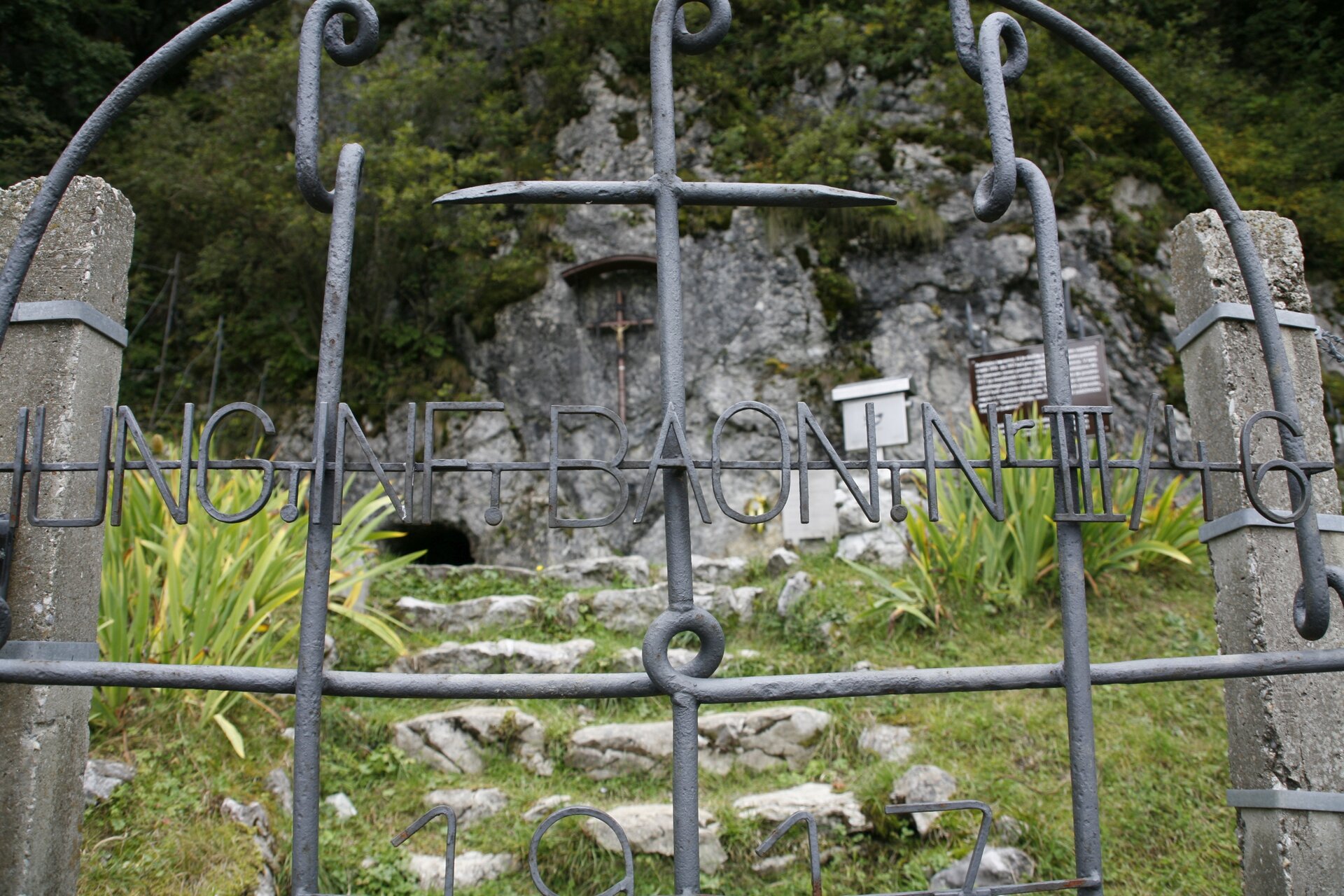Where:
Mt Mrzli vrh
5220 Tolmin
info@thewalkofpeace.com
+386 5 389 0167
Outdoor Museum Mrzli vrh

Outdoor Museum Mrzli vrh shows the remains of the Austro-Hungarian and Italian first lines of defence, densely crisscrossed with numerous trenches and dotted with caves. Mt. Mrzli vrh figured as one of the key points in the Austro-Hungarian defence of the Tolmin bridgehead. It was considered as one of the bloodiest battlefields in the Upper Soča Region.
A well-kept circular path that leads visitors past the remains of the Austro-Hungarian and Italian first lines of defence on Mt. Mrzli vrh starts on the alpine pasture of Pretovč. A beautiful view opens from Mt. Mrzli vrh over the onetime battlefield of the Isonzo Front. The ridge is densely crisscrossed with numerous trenches and dotted with caves of the two belligerent sides. On the north-eastern slope immediately below the top of the mountain the Austro-Hungarian Army hollowed a vast complex of caves. A concrete altar dedicated to the Virgin Mary still stands in one of them; it was erected in 1917 by the Hungarian soldiers of the Third Battalion of the 46th Infantry Regiment. The inscription on the altar, in Hungarian and German languages, says: “Virgin Mary, our Mother, may you protect us, your people.”
In World War I, Mt. Mrzli vrh figured as one of the key points in the Austro-Hungarian defence of the Tolmin bridgehead. It was considered as one of the bloodiest battlefields in the Upper Soča Region. Even though the Italian troops conquered Kobarid as early as 25 May 1915, a day after the beginning of the war and the crossing of the state border, it was only a few days later that the Italian command decided to launch a mass attack on Mt. Mrzli vrh. The Italian hesitation had enabled the Austro-Hungarian Army to reinforce their defence. The Italian Army repeatedly tried to conquer it but was unsuccessful throughout the twenty-nine months of the Isonzo Front. In 1915, the Italian commanders were determined to conquer these positions and the Tolmin bridgehead at any cost, therefore the losses in this year on either side were practically equal to the losses of the following two years of warfare taken together. Mt. Mrzli vrh became a notorious name. The front stabilized and the trench warfare began with minor attacks only, all until the time for the Twelfth Isonzo Battle came.
Discover more



